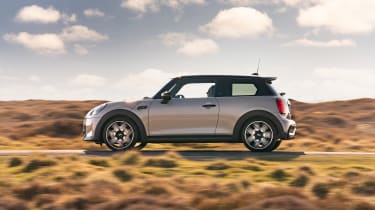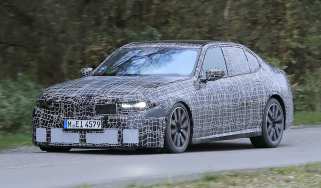Mini Cooper review – performance and 0-60
Its underpinnings might seem generic, but all variants perform well against the stop clock
With the standard Cooper sporting a 1.5-litre three-cylinder engine, the Mini has now totally transferred across to BMW’s modular engine range. Power stands at 134bhp, while torque is up to 162lb ft. The turbo is felt most in the mid-range, reducing the 0-62mph time to 8sec. For some of the evo office it's the most pleasant engine in the range to use, feeling more appropriate in its surroundings than the slightly pained-sounding 2-litre, though tall gearing blunts what could be an even more involving powertrain.
Quicker still is the Cooper S. With a manual transmission, the three-door version dashes to 62mph in 6.7sec and tops out at 146mph. The John Cooper Works is even quicker, covering the same metric in 6.1sec. Top speed for the Works is 153mph – more than enough for most, we suspect. It's just a shame neither model sounds particularly joyful in getting there. The engine is fairly smooth, but the artificial 'parp' it emits isn’t particularly sonorous and there’s little encouragement to push it to the red line. These times are all fitted with the quick-shifting automatic transmissions; manuals have a 0.2sec disadvantage there or thereabouts.
Adding a pair of doors inevitably dampens things a bit, but it’s marginal, adding between 0.2 and 0.3sec to their sprint times, and the Cooper S a single tenth, but the reality is you’ll be hard-pushed to notice on the road. The Coopers top out at 130mph, though all will manage over 100mph, with varying degrees of enthusiasm.
The Mini Electric’s initial getaway advantage on account of its torque is more than evened out after 40mph or so, making its 7.3sec 0-62mph time good, but not great, considering its size. It is ahead of most key rivals, though, with Honda’s clever (and brilliant) e and Fiat’s 500 Electric both losing out to the Mini in acceleration, both on paper and by the seat of your pants.




